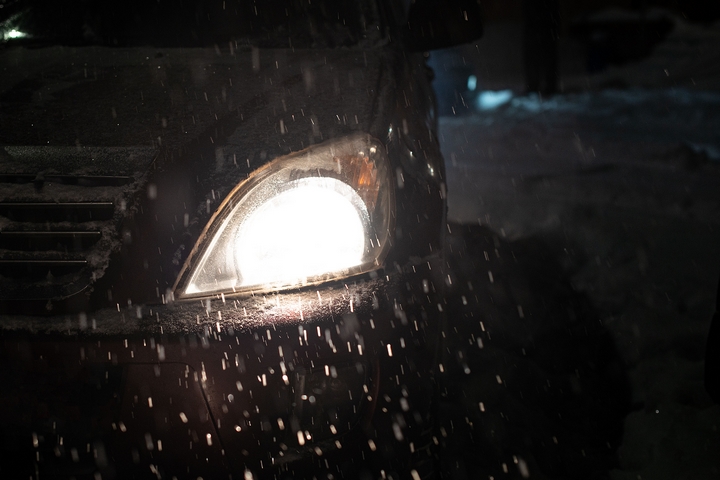
Driving in the rain can be really stressful, especially if you’re not used to it. Your visibility is reduced, the pavement gets wet and slippery, and you can easily lose control of your car if you’re not careful.
Before you start driving in the rain, you have to make sure your tires and your wipers are in a good condition. While on the road, you have to be even more alert than usual if you want to reach your destination safely, and without getting too anxious.
Check out these seven best tips for driving in the rain safely:
Tip #1: Make sure your tires are in good shape

One of the most important tips for driving in the rain is to make sure your tires are in good condition. If your tires are getting pretty old, it will be more difficult for them to go through water puddles without hydroplaning. If it has been a while since the last time you got new tires, you should consider it now before the Spring rains start to fall.
Having good tires is important, but they should also be properly inflated. This will help them have more traction when they come in contact with wet and slippery roads.
You should check your tire pressure regularly, and get them inflated when they need to be.
Tip #2: Replace your wipers if they streak

Just like tires, windshield wipers can wear out and loose some of their efficiency over time. Obviously, you need to have good wipers when driving in the rain, so if your wipers leave streaks on your windshield, you should correct the situation as soon as possible.
You should either replace your wiper blades, or simply replace their rubber strips if they are torn.
To make your wipers even more effective, you could also apply a water repellant treatment to your windshield. Your windshield will then repel water, so you can see better while you drive, even if it’s raining heavily.
Tip #3: Turn on your headlights and taillights

If your wipers are on, your headlights and taillights should be on as well. Keeping your lights on might help you see better in the rain, but it also makes you more visible to other drivers.
Even if you feel like you don’t need to turn on your lights to be able to see the road ahead, keep in mind that doing so is the best way to ensure other drivers will see you and will not rear-end your car.
Make it a habit of turning on your lights whenever you use your windshield wipers. From time to time, inspect whether the headlights and taillights are still working. Many people tend to overlook the lights at the back of their car, so always pay attention to your car’s taillights.
Tip #4: Slow down the driving

Speed limit signs are there to tell us how fast we should be driving when the driving conditions are ideal. When it’s raining hard and the road is slippery, you should slow down, especially if there is a lot of traffic.
When your visibility is reduced, driving more slowly will make it easier for you to see pedestrians and other hazards. But there are other reasons why you should not drive too fast when it’s raining.
Even if you have good tires and good brakes, braking will require more distance if the pavement is wet, and driving slowly will help you stay safe and avoid collisions.
Tip #5: Keep a safe distance between you and other vehicles

On top of driving more slowly, be sure to keep more distance between you and other vehicles than you usually would. This will allow you to brake safely when you need to.
Keeping a safe distance will also prevent you from receiving the spray of the vehicle in front of you right in your windshield, which is good to avoid when it’s already raining heavily.
Not following other drivers too closely could also come in handy if your car starts hydroplaning.
Tip #6: Don’t panic if your car starts hydroplaning

When the road is covered with water, your tires can lose traction and your car can slide uncontrollably. This is called hydroplaning.
If your car hydroplanes, it’s important to stay calm. You should ease off the gas pedal, and keep stearing straight until you can regain control of your car. If your car starts to spin, slowly turn the wheel in the direction it’s spinning in, and not the opposite direction. Avoid turning the wheel sharply, as this will only make things worse.
When your car stops hydroplaning, you could gently touch your brakes to dry them before you hit the next water puddle.
Tip #7: Don’t use cruise control

Finally, be sure not to use cruise control while it’s raining, as it could only make you lose control if your car starts hydroplaning. It will maintain its speed and throttle, and it could start to spin dangerously.
Stay in control of your vehicle, and keep in mind that other drivers might not be as careful as you are. Be ready to react quickly if something goes wrong, pay attention to everything that is going on around you, and stay calm.
Driving safely in the rain can be challenging, but it can definitely be done.
